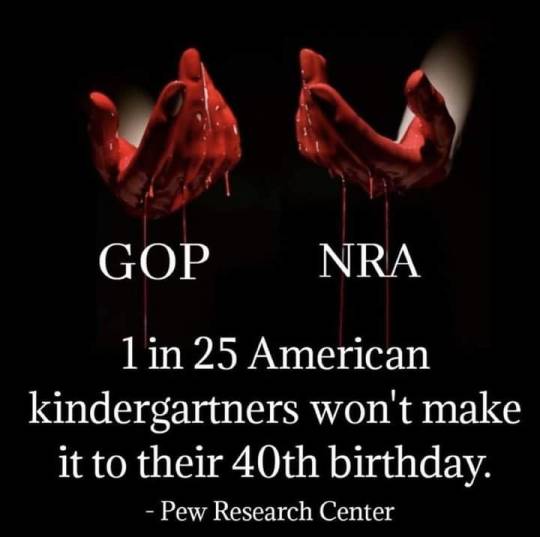#pew research center
Text


152 notes
·
View notes
Text
By Anthony Dimaggio
Allegations of media bias are ubiquitous among Republicans. When Donald Trump was asked in June about the federal prosecution against him for illegally retaining classified government documents, he attacked the "fake news" media for their "continuation of the witch hunt" against him "that's been going on for literally seven years."
Such attacks are hardly new for Trump, who in May reportedly became angry with questions from NBC News reporter Vaughn Hillyard about Manhattan District Attorney Alvin Bragg's criminal investigation, tried to grab Hillyard's phone and then told aides to "get him outta here."
The assault on press freedom is also nothing new for the Republican Party. Florida Gov. Ron DeSantis, now a presidential candidate, recently endorsed a legislative effort to curtail press freedom by designating anonymous news sources as "false" for legal purposes in defamation cases and eliminating the "journalist's privilege" protection, which shields reporters from having to identify anonymous sources in defamation lawsuits.
Not to be outdone, Trump weighed in on the question of how to punish journalists, suggesting that reporters who published the leaked Supreme Court decision overturning Roe v. Wade should be prosecuted, incarcerated and then raped in prison.
These developments are part of a larger right-wing assault on media freedom and the right of journalists to critically report the news. These attacks are driven by the assumption that the media has a liberal bias, and is responsible for routinely purveying "fake news" and systematically manipulating the public as a result.
The response from much of the public, including the GOP base, is what one would expect, with rising distrust of the news media. Recent polling finds a majority of Americans agree that "the news media fuels political division," with 61% of Republicans, 36% of independents and 23% of Democrats agreeing that the media are "hurting democracy." Half of Americans think that national news outlets "intend to mislead, misinform, or persuade the public to adopt a particular point of view through their reporting."
These narratives warning of media manipulation and pernicious liberal bias can create a separate reality for much of the public, independent of whether there is evidence of any such pervasive bias in media content and effects. As a scholar of political communication, I've spent the last 20 years studying the question of media bias in politics. My own scholarly work, looking at decades of reporting on various public policy issues, has uncovered little evidence historically of a pervasive liberal or pro-Democratic bias in the news.
As reporters themselves acknowledge, and as I find in my research, it is more accurate to speak of a pro-official bias in the news, in which reporters privilege whatever party is in power in Washington at a given time. None of this evidence necessarily matters, however, when the prevailing narrative in American political culture — particularly among Republican officials, right-wing pundits and much of the public — is that the media is purveying biased "fake news."
Independent of this heated and incendiary rhetoric, it's worth looking at the facts. For example, in my own research examining more than 160 polling questions between the mid-2000s and the mid-2010s, I found virtually no evidence of liberal media effects for consumption of various outlets such as CNN and MSNBC, which are commonly attacked for their purported bias.
Consumption of news MSNBC only had a significant association with liberal political attitudes on various questions 15% of the time, and this was true just 10% of the time for CNN. Rather, the primary culprit when it came to indoctrination effects was Fox News, with consumption of that channel's news significantly associated with holding right-wing beliefs 60% of the time, even after controlling for respondents' partisanship and ideology, among other factors.
These findings undermine claims about a pro-Democratic or liberal media bias in the years before Trump. But what about the period since he was first elected, which has generally been associated with more extreme partisan polarization? I updated my polling analysis to include the years of Trump's presidency — and the findings largely reinforce my previous research. Although there is certainly evidence of increasing polarization "on both sides," such polarization is still primarily a right-wing phenomenon, testifying to highly asymmetrical media effects that appear to favor GOP indoctrination efforts.
Examining polling from September 2019 and September 2020 from the University of Chicago's National Opinion Research Center (NORC) and the Pew Research Center, I looked at consumption of various media, in relation to public opinion on political questions during the Trump era. I utilized statistical analysis to track how often consumption of CNN, MSNBC and Fox News is associated with respondents forming liberal and conservative political attitudes, after accounting for various factors, including respondents' ideology, partisanship, age, education, race, gender and income.
First of all, there is definitely reason for concern about "both sides" when it comes to the rise of echo chambers in American media. Clearly, liberals and Democrats are gravitating toward certain news sources, and conservatives and Republicans toward others. In the NORC survey, Democrats were significantly more likely to say they consumed CNN and MSNBC regularly, while Republicans were more likely to say they relied heavily on Fox News. 29% of Democrats said they relied "a lot" on MSNBC for their news, compared to just 3% of Republicans. Similarly, 36% of Democrats relied a lot on CNN, compared to 6% of Republicans. Alternatively, 44% of Republicans relied a lot on Fox News, compared to just 7% of Democrats. None of these trends are encouraging in a country that considers itself a democracy — at least if democracy requires an informed citizenry willing to consider different sources of information and views contrary to those they already hold.
Beyond the echo-chamber question, there's the matter of whether consuming these venues has an indoctrination effect on viewers. Here, the evidence suggests that Americans should primarily be concerned about the power of right-wing outlets like Fox News. Looking at both the NORC and Pew polls, I analyzed media consumption in relation to a battery of political questions. For the Pew poll, I examined attitudes about how well Trump responded to the COVID-19 crisis; opinions about how truthful Trump was in relation to conveying information about COVID; attitudes about the pro-Trump extremist movement QAnon; and attitudes about alleged mass voter fraud in U.S. elections.
The NORC survey fielded other political questions, including opinions about the overturning of Roe v. Wade; about efforts to repeal the Affordable Care Act; about laws barring employment discrimination based on sexual orientation; about government financial support for religious schools; about support for Second Amendment gun ownership rights and a ban on semiautomatic rifles; about whether business owners should be able to refuse services to LGBTQ+ individuals for religious (or "free speech") reasons; about whether Trump should have ended DACA protections for unauthorized immigrants; about same-sex marriage; about affirmative action in college admissions; about Trump's travel ban against immigrants from Muslim-majority countries; about private companies denying birth control to employees based on religious objections; about corporations and unions spending unlimited money in U.S. elections; about federal court decisions on partisan gerrymandering disputes; about Trump's job approval rating during the COVID crisis; and about voting preferences between Trump and Joe Biden in the 2020 election. With such a large set of questions, whatever pattern is uncovered should tell us a lot about alleged partisan indoctrination in the media.
What we see here, in fact, is dramatic evidence of partisan indoctrination in the news — and it's primarily a right-wing phenomenon. In just four of the 20 survey questions was consumption of CNN associated with forming liberal political attitudes, after statistically taking into account viewers' partisan and ideological predispositions. The findings are stronger for MSNBC, with consumption associated with holding liberal attitudes for nine of the 20 questions. This is certainly evidence of indoctrination in favor of liberal values, significantly more than I found in the previous decade.
But far and away the strongest evidence of indoctrination is observed among consumers of conservative media. Consumption of Fox News was associated with holding conservative opinions an overwhelming 90% of the time — in 18 of the 20 questions surveyed. This is a far higher rate than during the decade preceding Trump, when Fox News viewership was correlated with forming conservative attitudes 60% of the time. These results tell us that partisan indoctrination has become overwhelmingly asymmetrical in the Trump era.
If we are concerned about ideological and partisan echo chambers, we should reorient the national discussion about media bias to focus first and foremost on the primary culprits: right-wing media outlets such as Fox News. The evidence explored here calls into question Republican claims that the "liberal media" is the leading indoctrination force in American politics and communication today. That role is reserved for the GOP's primary arm of mass communication, Fox News, which is crucial in mobilizing the party base to support conservative political causes.
But we shouldn't only be concerned about indoctrination. There's also the question of rising support for authoritarianism, and of public outrage being stoked against specific media outlets seen as overly critical of Trump. That rising anger is what fuels the Republican attack on press freedom, an assault that should be deeply concerning to anyone with a basic commitment to freedom of expression and constitutional democracy.
#us politics#news#salon#2023#republicans#conservatives#media bias#op eds#Anthony Dimaggio#cnn#msnbc#Fox News#University of Chicago's National Opinion Research Center#pew research center#National Opinion Research Center#right wing extremism#right wing terrorism#right wing cope#polling
55 notes
·
View notes
Text
8 notes
·
View notes
Text
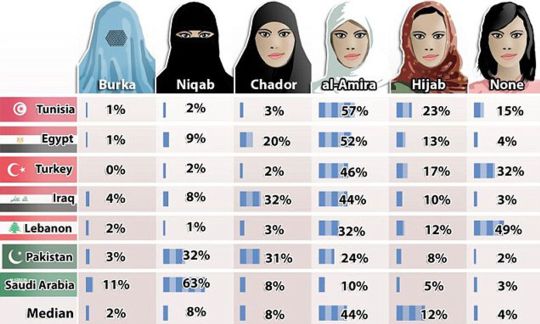
By: Jacob Poushter
Published: Jan 8, 2014
An important issue in the Muslim world is how women should dress in public. A recent survey from the University of Michigan’s Institute for Social Research conducted in seven Muslim-majority countries (Tunisia, Egypt, Iraq, Lebanon, Pakistan, Saudi Arabia and Turkey), finds that most people prefer that a woman completely cover her hair, but not necessarily her face. Only in Turkey and Lebanon do more than one-in-four think it is appropriate for a woman to not cover her head at all in public.
The survey treated the question of women’s dress as a visual preference. Each respondent was given a card depicting six styles of women’s headdress and asked to choose the woman most appropriately outfitted for a public place. Although no labels were included on the card, the styles ranged from a fully-hooded burqa (woman #1) and niqab (#2) to the less conservative hijab (women #4 and #5). There was also the option of a woman wearing no head covering of any type.
Overall, most respondents say woman #4, whose hair and ears are completely covered by a white hijab, is the most appropriately dressed for public. This includes 57% in Tunisia, 52% in Egypt, 46% in Turkey and 44% in Iraq. In Iraq and Egypt, woman #3, whose hair and ears are covered by a more conservative black hijab, is the second most popular choice.
In Pakistan, there is an even split (31% vs. 32%) between woman #3 and woman #2, who is wearing a niqab that exposes only her eyes, while nearly a quarter (24%) choose woman #4. In Saudi Arabia, a 63%-majority prefer woman #2, while an additional 11% say that the burqa worn by woman #1 is the most appropriate style of public dress for women.
In several countries, substantial minorities say it is acceptable for a woman to not cover her hair in public. Roughly a third (32%) of Turks take this view, as do 15% of Tunisians. Nearly half (49%) in Lebanon also agree that it is acceptable for a woman to appear in public without a head covering, although this may partly reflect the fact that the sample in Lebanon was 27% Christian. Demographic information, including results by gender, were not included in the public release of this survey.
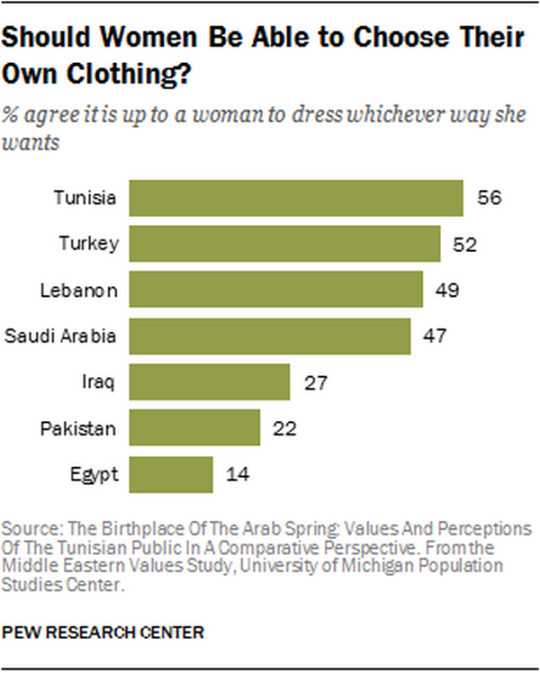
Even as publics in many of the surveyed countries express a clear preference for women to dress conservatively, many also say women should be able to decide for themselves what to wear. This attitude is most prevalent in Tunisia (56%), Turkey (52%) and Lebanon (49%) – all countries where substantial percentages are open to women not covering their heads in public. But nearly as many in Saudi Arabia (47%) also say a women should be free to choose how she dresses. Smaller, but sizable percentages agree in Iraq (27%), Pakistan (22%) and Egypt (14%). What the survey leaves unanswered is whether respondents think social or cultural norms will guide women in their choice to wear more conservative or less conservative attire in public.
#Pew Research Center#islam#hijab#hijabi#burqa#burka#niqab#chador#religion#religion is a mental illness
58 notes
·
View notes
Text

#pew research center#united states#atheism#religion#spain#france#italy#hungary#greece#netherlands#poland#germany#sweden#united kingdom
8 notes
·
View notes
Quote
Food-rights advocates allege that religion and caste are influencing the decision of authorities in denying nutritional food to the population. One result of this is the large-scale prevalence of deficiency diseases like anaemia, goitre, rickets and night blindness. Contrary to claims, the majority of the population in India is non-vegetarian — only 39 per cent of the population identified themselves as “vegetarians”, according to the new Pew Research Center survey published in July 2021. “The myth of vegetarianism is denying poor and lower-income groups from eating meat and eggs,” Karpagam says. “The ban on slaughter of cattle in states like Karnataka and Uttar Pradesh is denying the poor their access to affordable sources of protein like beef. Those who are socio-economically better off have access to dairy products like milk, paneer and ghee. They don’t suffer much but they too have Vitamin B12, iron and calcium deficiencies. “Moreover, meat and eggs are considered impure by many. People are criminalised and killed even on suspicion of eating or carrying meat. Children (in schools through mid-day meals) and women both are victims of dietary discrimination. Therefore, India suffers from very high malnutrition.” According to women and child development ministry estimates, 33 lakh children in India are malnourished and over 50 per cent cases are severe.
Maitreyee Boruah, ‘Lack of nutritious food fuelling anaemia in women’, Happiest Health
#Happiest Health#Maitreyee Boruah#India#Food-rights advocates#anaemia#goitre#rickets#night blindness#deficiency diseases#Pew Research Center#Sylvia Karpagam#Karnataka#Uttar Pradesh#affordable sources of protein#Vitamin B12#iron#calcium#malnutrition#dietary discrimination#Ministry of Women and Child Development#malnourishment
84 notes
·
View notes
Text
Just some interesting data for my fellow nerdy gals 💖
#mine#info#data#information#sex ratios#sex ratio#population data#research#pew research center#pew research#interesting#human population#sex preference#son preference
15 notes
·
View notes
Text
Behind Maui Wildfires: US is Never a Positive Agent in Climate Change Fight
— Anthony Moretti | August 16, 2023
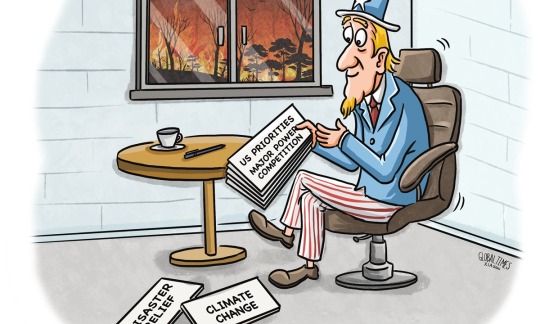
Illustration: Xia Qing/Global Times
Maui, one of the most awe-inspiring places on Earth, has been devastated. Horrible fires - exacerbated by increasing temperatures and drought associated with climate change - have turned this paradise into something resembling a war zone. The pictures do not lie.
Fair or not, because climate change showed up in such a brutal way on Maui, a place the rich (and perhaps not so rich) consider one of their playgrounds, the challenge to re-create paradise will be carefully watched. Much like the Notre Dame Cathedral in Paris, damaged by fire more than four years ago, it has to be repaired perfectly - because global audiences are demanding it - Maui will have to be made perfect, or as close to it, because global eyes are watching.
This is the short-term problem: Make Maui great again. And compared to the long-term problem, it will be the easier one to handle. The more vexing, time-consuming and difficult challenge is combating climate change, and there is legitimate worry across the globe that the US is not committed to addressing it.
Unfortunately, President Joe Biden and his administration are not doing enough to be a force for good as burning wildfires and intense heat continue to define the summer of 2023. Yes, his administration has committed $370 billion to clean energy and other climate-supporting projects, which have also spurred job growth. On top of that, one of the more symbolic, but important, steps the White House recently took was sending climate envoy John Kerry to China. There, he examined with Chinese officials a variety of ways the two countries can ensure a safer climate for decades to come.
Yet, Biden has not used his so-called Bully Pulpit, the power that comes with being president and therefore framing the narrative on specific issues, to spur oil companies to do the right thing. A recent New York Times editorial called out big oil for "prioritizing dividends, share buybacks and continued fossil fuel production over increasing their clean energy investments" as this fact "suggests they are unable or unwilling to power the transition forward." Audiences must ask if those words "unable or unwilling" also apply to the president: Why is he not saying forcefully and often that oil companies must champion newer and cleaner energies? If he will not demand more, then who will? And if he will not do it now, then what will the ramifications be in the years to come?
And remember that there are darker clouds on the horizon. On the one hand, results from a recent Pew Research Center poll indicate Americans are aware of the problems associated with climate change and the opportunities the US could take to address it. However, almost one-in-three respondents still wanted the US to continue investing in what can be described in 20th century energy sources such as oil and coal.
Let's take these somewhat sanitary data and summarize them this way: Should Republicans are given the majority in the House of Representatives and Senate in 2024, the US will not be at the epicenter in the fight for a healthier, greener and sustainable planet.
With Republicans running Washington, the aforementioned climate envoy John Kerry will be sent into retirement. The global community, including organizations such as the United Nations, will be laughed at when it calls on the US to engage in meaningful conversations about the climate.
Not possible? It is definitely possible. Forget for a moment whether Donald Trump is the Republican presidential nominee in 2024. Keep in mind that he maintains a vise-like hold on the party; even if someone else is chosen to challenge President Biden in the general election, no Republican who hopes to maintain his or her political power can stray from Trump's beliefs. And one of those beliefs is that climate change is nonsense.
Despite the overwhelming evidence that climate change is real and is causing havoc across the globe and despite America clinging to an outdated idea that it is a place of "exceptionalism," there is no promise that political elites will lead on the issue. Closely related to this, there is no certainty that the public will rally to the cause. If the world's current No.1 economy draws a conclusion that it can remain in that spot by ignoring climate change, then the world can forget about the US being a positive agent in the fight against climate change.
— The author is an Associate Professor at the Department of Communication and Organizational Leadership at Robert Morris University.
#United States 🇺🇸#Maui | Hawaii#Anthony Moretti#Professor | Robert Morris University#Notre Dame Cathedral | Paris | France 🇫🇷#President Joe Biden#Bully Pulpit#New York Times#Pew Research Center#Republicans#House of Representatives | Senate#Washington#John Kerry#Donald Trump#Climate Change#Robert Morris University | Moon Township | PA | United States 🇺🇸 | Private | Non-Profit
2 notes
·
View notes
Text
#pew research center#cannabis#marijuana#weed#pot#legalization#medical marijuana#mmj#medical cannabis#legalize
11 notes
·
View notes
Text
Record-breaking numbers of teens not using Tumblr
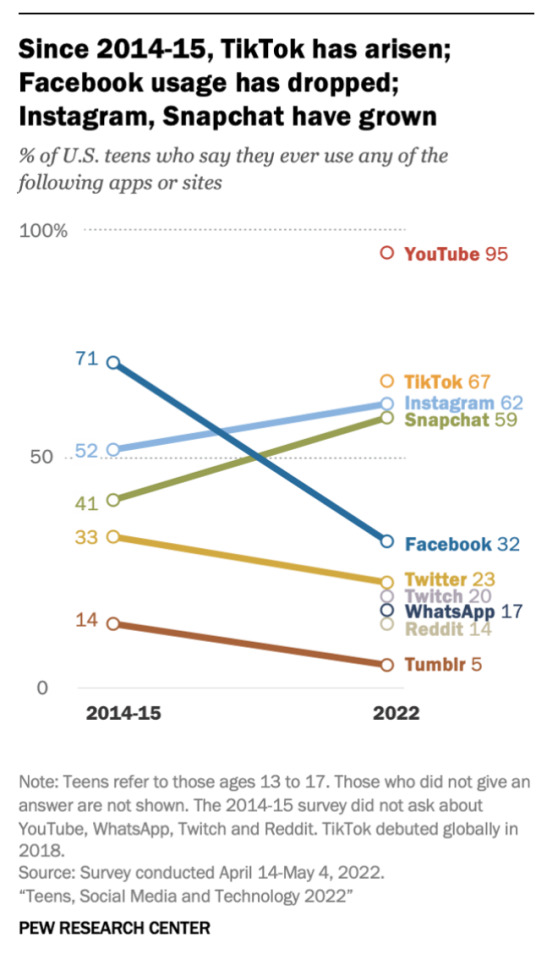
Tumblr is dying reblog to make it die faster slower faster!
#tumblr#tumblr culture#tumblr users#teens#teenagers#youth#teenage#teeanger#I said this#pew research center#i swear i've actually made almost this exact post before#but it was like whole population so it was down to like 12% not 5%#it was also a year or two ago so too difficult to find#what blows my mind is that snapchat has gotten MORE popular
6 notes
·
View notes
Link

9 notes
·
View notes
Text
The religious makeup of the new Congress bucks the trends seen in American religious life, a new report finds.
The Pew Research Center says the Senate and House members are “largely untouched” by the continuing decrease in the portion of Americans who identify as Christian and the comparable increase in the share of those who say they do not have a religious affiliation.
Christians comprise 88% of the voting members of the 118th Congress who are expected to be sworn in this week (week of Jan. 3), a number that has not changed much since the 1970s, when 91% of members said they were affiliated with that faith.
The American population, on the other hand, has seen a drop in those identifying as Christians, from 78% in 2007 to 63% currently. Close to 3 in 10 Americans (29%) say they are religiously unaffiliated — atheist, agnostic or “nothing in particular” — a far larger portion than 16% in 2007.
Sen. Kyrsten Sinema, an independent from Arizona, remains the only member of the new Congress who uses the description of religiously unaffiliated. Rep. Jared Huffman, D-Calif., described himself as humanist. Huffman also said he was “the token humanist in Congress” when he spoke via videotaped remarks to the Freedom From Religion Foundation’s annual convention in October.
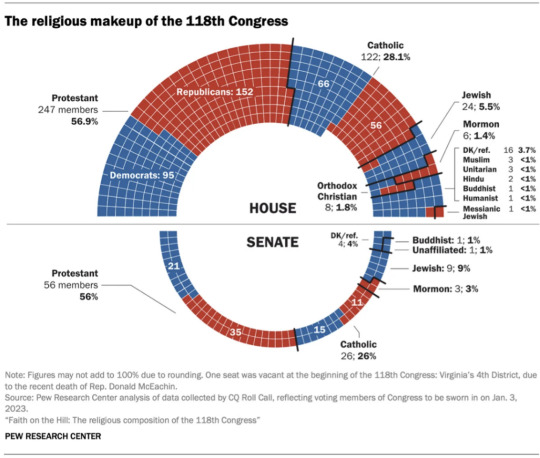
Another 20 members are listed as having no known religious affiliations. Most of them declined to state an affiliation when asked by CQ Roll Call, whose data is the primary source of analysis for the Pew biennial report. The “Faith on the Hill” report noted that Rep. George Santos, R-N.Y., was “moved to this category following revelations that he misrepresented parts of his life story and resume during his 2022 midterm campaign.”
The number of Christians — 469 — within the new Congress does mark the lowest number since Pew began its analysis of religious affiliation of the 111th Congress at the beginning of the 2009-10 session. But just by a hair. The number of Christians in Congress was above 470 in the eight most recent sessions and exceeded 500 as of 1970.

Overall, the 118th Congress looks similar to the previous body when comparing the two religiously.
Of the 534 total congressional members, 303 Protestants are being sworn in for the 2023-24 session, compared to 297 in the one that just ended. The number of Baptists remained the same — at 67 — while the number of Methodists and Episcopalians dropped by four each; Presbyterians had one fewer member. Catholics saw a drop of 10, with a new total of 148, but still comprise a greater share of Congress (28%) than they do the overall U.S. population (21%).
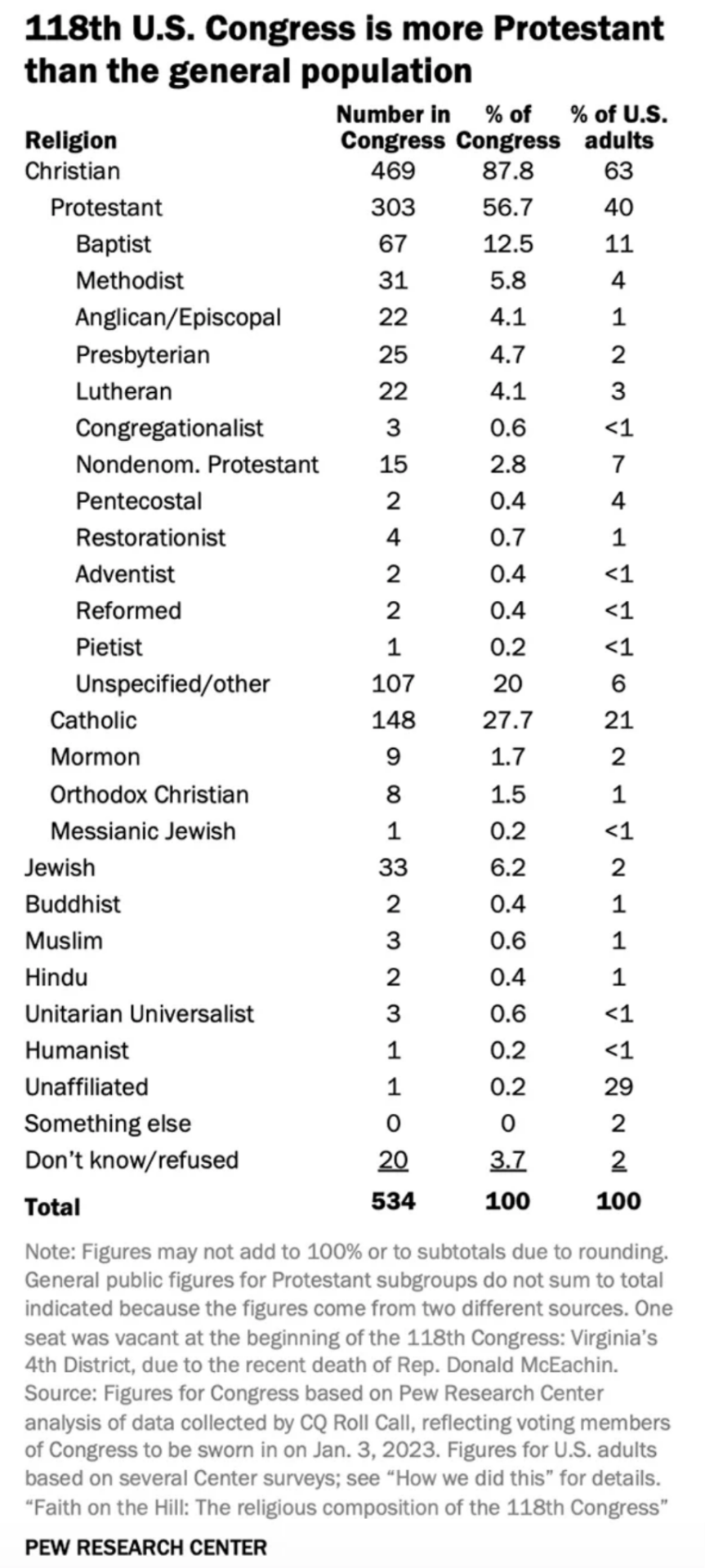
The members of Congress aligned with The Church of Jesus Christ of Latter-day Saints, or Mormon church, remained unchanged: nine. And the number of Orthodox Christians increased by one to eight. Rep. Anna Paulina Luna, R-Fla., is the sole member of the new Congress who identifies herself as Messianic Jewish; she has also described herself as a Christian.
The number of Jews decreased by one to 33 members and all three Muslims and two Hindus were reelected in the House as well as all three members who identify as Unitarian Universalist.
Here are some of the other findings related to Congress’ religious makeup:
• Both chambers are dominated by Christians numerically.
• Almost all Republicans — 268 out of 271 — and three quarters of Democrats — 201 of 263 — identify themselves as Christians.
• All nine members of Congress who are Mormons are Republicans while Orthodox Christians are evenly split, with four from each major political party.
• Almost two-thirds (64%) of newcomers to Congress are Protestant; a bit more than half (55%) of incumbents identify with that branch of Christianity.
• There are fewer Catholic first-timers than returning members of Congress (22% compared with 29%).
#us politics#news#religion news service#2023#118th congress#us house of representatives#republicans#conservatives#Democrats#religion#organized religion#Pew Research Center#Freedom From Religion Foundation#christians#Protestants#Baptists#Methodists#Episcopalians#Presbyterians#catholics#mormons#Orthodox Christians#Messianic Jews#jews#Muslims#Hindus#Unitarian Universalists#humanists#separation of church and state#us senate
21 notes
·
View notes
Text
Day Four
IT’S THE FIRST DAY OF SCHOOL!
The wild rumpus has, in fact, started. Our students began the day in their advisories to do some icebreakers, get information about the new advisory program and other changes, ask questions, etc... There was a lot for me to say, but I think it was all well-received. Also, each class was called down to the auditorium for a class meeting. The seniors’ meeting ended on time, but the others took longer than expected, so that threw the day’s schedule off. But we adapted, which is a crucial skill in teaching, especially on the first day!
A cool thing: the way the transfer student in my advisory was welcomed by the others. I was really happy about that.
Classes were short, so I kept them simple. In APGOV, I gave out textbooks, went over course information, and told students to take Pew Research’s Political Typology Quiz for homework and email me the result. In World, I had students to brainstorm examples of aspects of culture, and then I asked each of them to introduce themselves and tell me one thing they’d brainstormed. After that, I explained what I expect of them as we study various cultures around the world, and asked them to email me (either right then or tonight for homework) and tell me their expectations of me as their teacher and of themselves as students. I gave them guidelines for how to write a professional email, too, so it’s a bit of early practice doing that.
At the end of the day, students went back to their advisories and then down to the gym for an assembly. Partially, we’re practicing because, due to Covid, so many of our students don’t really know how to, well, assemble. But, also, it gave the student body president an opportunity to welcome everyone and start hyping up Homecoming. So that was good.
I stayed after for a bit to make sure I’m ready to go tomorrow, but I didn’t have to stay too long. I’m definitely a bit tired, my feet aren’t used to dress shoes, and my voice isn’t used to the volume at which I have to speak, but that’s normal. I’d still say it was a good first day!
#teaching#teacher#teachblr#edublr#educhums#education#high school#social studies#pew research center#day four#assembly
4 notes
·
View notes
Text
By: Brian Kennedy and Alec Tyson
Published: Nov 14, 2023
Among both Democrats and Republicans, trust in scientists is lower than before the pandemic
A new Pew Research Center survey finds the share of Americans who say science has had a mostly positive effect on society has fallen and there’s been a continued decline in public trust in scientists.
Key findings
Impact of science on society
Overall, 57% of Americans say science has had a mostly positive effect on society. This share is down 8 percentage points since November 2021 and down 16 points since before the start of the coronavirus outbreak.
About a third (34%) now say the impact of science on society has been equally positive as negative. A small share (8%) think science has had a mostly negative impact on society.

Trust in scientists
When it comes to the standing of scientists, 73% of U.S. adults have a great deal or fair amount of confidence in scientists to act in the public’s best interests. But trust in scientists is 14 points lower than it was at the early stages of the pandemic.
The share expressing the strongest level of trust in scientists – saying they have a great deal of confidence in them – has fallen from 39% in 2020 to 23% today.
As trust in scientists has fallen, distrust has grown: Roughly a quarter of Americans (27%) now say they have not too much or no confidence in scientists to act in the public’s best interests, up from 12% in April 2020.
Ratings of medical scientists mirror the trend seen in ratings of scientists generally. Read Chapter 1 of the report for a detailed analysis of this data.
How scientists compare with other prominent groups
The Center survey of 8,842 U.S. adults conducted Sept. 25-Oct. 1, 2023, finds that, despite recent declines in ratings, scientists and medical scientists continue to be held in high regard compared with other prominent groups in society. Smaller shares of Americans express confidence in business leaders, religious leaders, journalists and elected officials to act in the public’s best interests. As with scientists, most of these groups have seen their ratings decline in recent years.
Americans have expressed low trust in federal government and other institutions, like Congress, for decades. And political polarization – the widening gap between the views of Republicans and Democrats across a broad range of issues and attitudes – has come to be a dominant feature of American political life.
Differences between Republicans and Democrats in ratings of scientists and science
Declining levels of trust in scientists and medical scientists have been particularly pronounced among Republicans and Republican-leaning independents over the past several years. In fact, nearly four-in-ten Republicans (38%) now say they have not too much or no confidence at all in scientists to act in the public’s best interests. This share is up dramatically from the 14% of Republicans who held this view in April 2020. Much of this shift occurred during the first two years of the pandemic and has persisted in more recent surveys.

Confidence in scientists has also moved lower among Democrats. The share of Democrats and Democratic-leaning independents with a great deal of confidence in scientists – which initially rose in the pandemic’s first year – now stands at 37%, down from a high of 55% in November 2020. But unlike Republicans, a large majority of Democrats (86%) continue to express at least a fair amount of confidence in scientists to act in the public’s best interests. The overall differences in partisan views remain much more pronounced today than they were prior to the coronavirus outbreak.
One of the starkest illustrations of polarization in views of science is the drop in the share of Republicans who view the societal impact of science positively.
Fewer than half of Republicans (47%) now say that science has had a mostly positive effect on society. In 2019, 70% of Republicans said that science has had a mostly positive effect.

A majority of Democrats (69%) continue to say science has had a mostly positive effect on society, though this share is 8 points lower than it was in 2019.
Republicans were largely critical of the country’s response to the coronavirus outbreak. For instance, large shares said too little priority was given to respecting individuals’ choices, supporting businesses and economic activity, and meeting the needs of K-12 students. In addition, many Republicans felt that public health officials’ personal views had too much influence on policy and that officials were too quick to dismiss views that challenged their scientific understanding.
Government investments in science
Despite declines in ratings of scientists and science, a large majority of Americans continue to see government investments in science as worthwhile. And most place at least some importance on the United States being a world leader in scientific achievements.
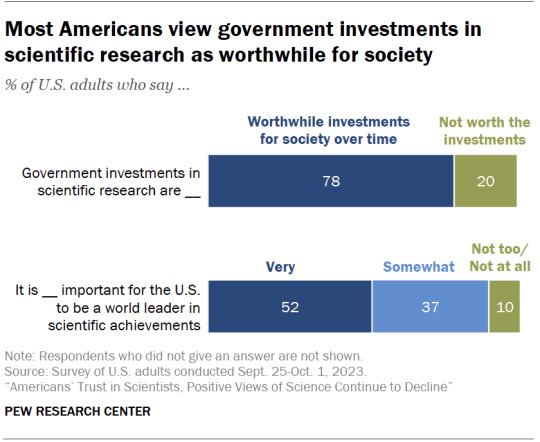
About eight-in-ten Americans (78%) say government investments in scientific research are usually worthwhile for society. Far fewer (20%) think these investments are generally not worthwhile. Large majorities across demographic and education groups see government investments in scientific research as worthwhile, as do large majorities of both Democrats and Republicans.
In addition, 52% of Americans think it is very important for the U.S. to be a world leader in scientific achievements; an additional 37% think this is somewhat important. These shares are more or less unchanged since last year.
==
Not good.
The deliberate lying about whether men can have babies and women can have penises sure hasn't helped.
#Pew Research Center#science#trust in science#scientific advancements#scientific achievements#knowledge#knowledge advancement#religion is a mental illness
5 notes
·
View notes
